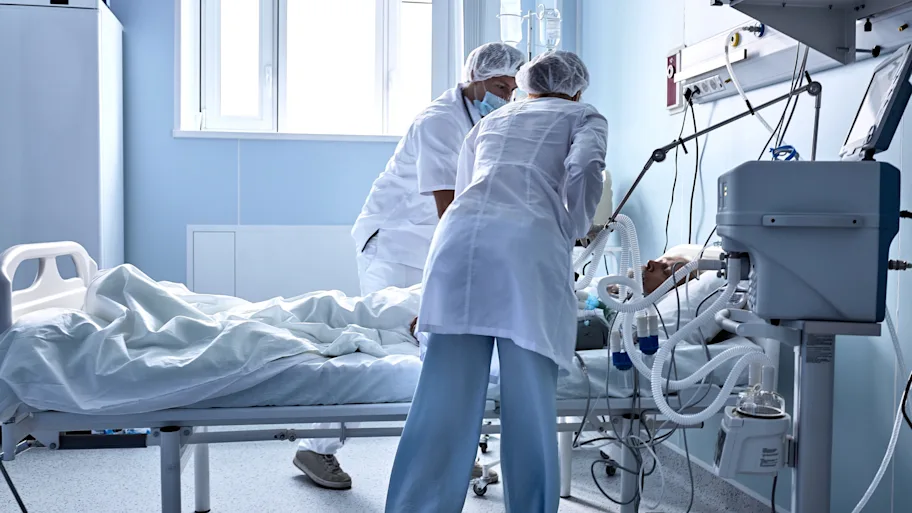
- Science news
- Health
- New gene therapy delivery device could let hospitals create personalized nanomedicines on-demand
New gene therapy delivery device could let hospitals create personalized nanomedicines on-demand

A new gene therapy delivery device could let hospital pharmacies make personalized nanomedicines to order. This democratized approach to precision medicine, as published in Frontiers in Science, could revolutionize how hospitals treat rare diseases, even in low-resource settings.
Rare diseases affect millions worldwide, yet the one-size-fits-all model of drug development leaves patients with few treatment options. Now a European research project called NANOSPRESSO aims to tip the balance in patients’ favor by boosting access to low-cost bespoke gene and RNA therapies.
The prototype NANOSPRESSO device combines two proven technologies—nucleic acid therapeutics and lipid nanoparticles—into a portable manufacturing unit. Hospital pharmacists could use the unit to prepare sterile, injectable nanomedicines tailored to the specific genetic abnormality causing the patient’s condition, bypassing the need for centralized drug production.
Most medicines, including gene therapies, are produced in centralized facilities, a model that works for high-volume drugs but not for rare conditions that each affect small numbers of patients. High manufacturing costs and limited demand mean many rare diseases are left untreated.
Led by Prof Raymond Schiffelers at UMC Utrecht, NANOSPRESSO could subvert these blockers by decentralizing production of nucleic acid nanomedicines to the local hospital. This could boost access to these therapies, even in low-resource settings.
“Rare diseases collectively rank among our top global health challenges in terms of prevalence. Their combined impact underscores the urgent need for a platform that lets hospitals personalize medicines in-house and on-demand affordably,” says Schiffelers. “By shifting production to the point of care, NANOSPRESSO could help bring life-changing precision medicines within reach of patients.”
Rare diseases affect 300 million people worldwide—36 million in the EU alone—with seven in 10 of those beginning in childhood. Although each disease affects only a small population—defined by the European Medicines Agency (EMA) as no more than five in 10,000 people—there are between 5,000 and 8,000 such diseases.
"We're building a path to precision nucleic acid nanomedicine” says first author Dr Mariona Estapé Senti, also from UMC Utrecht. “NANOSPRESSO could revolutionize the way we treat rare diseases by bringing personalized medicine to more patients, faster. The user-friendly, affordable device could let medics treat conditions that conventional approaches can’t manage.”
From blanket to bespoke
Nucleic acid therapies work by specifically targeting the genetic instructions responsible for faulty protein production. They are also highly adaptable. By changing only the sequence of the RNA or DNA used, they can be directed to treat different diseases—from inherited disorders and certain cancers, to disabling crucial proteins in viral or bacterial cells to treat infections. The specificity of the medicine may also reduce the likelihood and severity of side effects.
Funded by the Netherlands Science Agenda, NANOSPRESSO uses small portable cartridges that pharmacists can load with a combination of lipid components and patient-specific nucleic acid therapies.
These are then mixed onsite using a portable microfluidic device—akin to espresso capsules tailored to consumers’ tastes. The lipid nanoparticles in the device protect the nucleic acid cargo and help it reach the right target in the cell.
The result is a precisely formulated, targeted nanomedicine that’s ready for injection. Because the system is small, self-contained, and designed for use by hospital pharmacists, it could be deployed in clinics and hospitals around the world, allowing the most advanced medicines to be made-to-order in-hospital.
Challenging the model
NANOSPRESSO raises questions about how the approach might fit within current healthcare systems and regulatory frameworks.
“The current model doesn’t work for millions around the world, and we believe NANOSPRESSO will fill that treatment gap. To that end, we’re actively engaging in discussions with regulators and drug developers about how to make this happen for patients,” says Schiffelers.
The authors cite historical precedent in pharmacies: until the 20th century, pharmacists routinely prepared tailored medicines by hand, in a process known as ‘compounding’. They also cite the success of using similar nucleic acid platforms to produce, for example, mRNA vaccines during the COVID-19 pandemic, and say that modern advancements in closed-system microfluidics have enabled such breakthroughs as NANOSPRESSO.
“Our goal is to increase access to these therapies,” says Estapé Senti. “Although NANOSPRESSO challenges the conventional medical approach, we are also engaging with regulatory authorities to ensure compliance with quality, safety, and efficacy standards, tools, and safeguards.”
Prototypes of the system are currently in development, and the team is actively addressing the technological, scientific, medical, and regulatory challenges involved. Future work will explore how NANOSPRESSO could be safely integrated into real-world healthcare settings.
The project NANOSPRESSO-NL received funding from the Netherlands Science Agenda, Netherlands Organization for Scientific Research.
The article is part of the Frontiers in Science multimedia article hub ‘Localized production of nucleic acid nanomedicines’. The hub features an explainer, a version of the article written for kids, and an editorial, two viewpoints, and policy outlook from other eminent experts: Dr Daniel Petersheim and Prof Christoph Klein (LMU Klinikum, Germany), Prof Horacio Cabral (The University of Tokyo, Japan), Prof Claes Wahlestedt and Dr Olga Khorkova (University of Miami, USA), and Alexandra Heumber Perry and Debra Bellon (Rare Diseases International, Switzerland).
About Frontiers in Science
Frontiers in Science is Frontiers’ multidisciplinary, open-access journal focused on transformational science to accelerate solutions for healthy lives on a healthy planet.
The journal publishes a select number of exceptional peer-reviewed lead articles invited from internationally renowned researchers, whose work addresses key global challenges in human and planetary health. Each lead article is enriched by a diverse hub of content that extends its reach and impact across society – from researchers and policymakers to lay audiences and kids.
For more information, visit www.frontiersin.org/science and follow @FrontScience on X, Frontiers in Science on LinkedIn, and @Frontiers on Bluesky.
Please note the Frontiers press office business hours of Monday-Friday, 8:30 am-5:30 pm Central European Time, excluding Swiss and UK holidays. Queries received outside of these business hours will be answered the next business day.
REPUBLISHING GUIDELINES: Open access and sharing research is part of Frontiers’ mission. Unless otherwise noted, you can republish articles posted in the Frontiers news site — as long as you include a link back to the original research. Selling the articles is not allowed.







